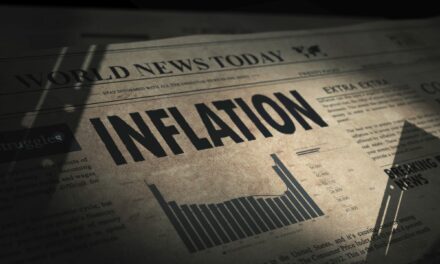Volume indicators are an essential tool for traders seeking to understand market dynamics and increase their trading profitability. As an active trader, I use OBV, MFI, A/D, VWAP, and the Chaikin oscillator to spot reversal points and confirm trends. I combine these tools with Price Action patterns.
You’ll understand how these indicators reveal demand and supply, identify liquidity levels, and predict price impulses. You’ll learn to implement them in your trading strategies, spot the best entry points, and set stop-loss orders to reduce risks. You’ll master volume analysis to trade confidently in the Forex, crypto, and other markets.
The article covers the following subjects:
Major Takeaways
- Volume indicators, such as OBV, MFI, A/D, VWAP, or the Chaikin oscillator, reflect supply and demand by spotting trends and price reversal points.
- They make the signals produced by trend indicators (MA, MACD) and oscillators (RSI, Stochastic) more relevant, allowing you to make better-informed trading decisions.
- Divergences between the price and the indicator, such as growing volumes in a flat market, signal an eventual trend shift.
- They produce the most accurate signals on H4 time frames and higher, whereas M5-M15 periods tend to distort signals due to market noise.
- Volume indicators are used to find liquidity levels and entry/exit points, and set stop-loss and take-profit orders.
- They are best applied to Forex, stocks, and cryptos when adjusted for volatility and used alongside fundamental analysis.
- However, they require confirmation from other tools; their efficiency depends on your strategy and demo testing.
Best Volume Indicators in Trading
Let’s look at the most popular and best volume indicators. Market participants can apply them to any time frame both in the Forex market and in the cryptocurrency, commodity and commodity markets.
Below are volume indicators that traders and investors use in their trading strategies:
-
On Balance Volume (OBV) is a classic indicator that is associated with price changes in the chart. It displays the balance volume and its impact on the price in a specific period of time.
-
Money Flow Index (MFI) displays the dynamics of the inflow and outflow of funds for an asset. It is similar to RSI, except that it also analyzes market volumes.
-
Accumulation/Distribution (A/D) shows the level of supply & demand for an instrument. This indicator allows market participants to determine the relationship between price and volume changes.
-
Volume-Weighted Average Price (VWAP) displays the average price over a specified period of time, taking into account weighted average trading volumes.
- The Chaikin Oscillator shows the strength of trend direction, trend reversals and signs of strengthening price dynamics.
Let’s look at each of these volume indicators in more detail.
On-Balance Volume (OBV)
The OBV indicator was invented by Joseph Greenville in 1963. He first described it in the book “New Key to Stock Market Profits”. According to Greenville, the fundamental force that moves the market is trading volume. Market volume is the main parameter that traders and investors should pay attention to before opening a trade.
OBV determines the intensity of cash flows in an asset. This indicator is used:
-
if a new candle closes in the chart higher than the previous one, the volume of that candle is added to the total cumulative volume.
-
if the next candle closes below the current candle, the volume, on the contrary, is subtracted from the total volume.
The accumulated total is displayed in the curve chart as a positive or negative value.
The basic principle on which the indicator is based is that price changes in the chart are preceded by changes in values on the OBV indicator. According to Greenville, impulse movements of market volumes without significant price fluctuations in the chart are a prerequisite for the upcoming strong movement in asset quotes. This phenomenon is explained by the fact that major players accumulate buy trades, while smaller traders sell off the asset.
In simple words, trading volume increases when a major player accumulates an asset, and the price at this moment moves sideways. As soon as major players have accumulated enough long or short trades, an impulse price movement occurs up or down, depending on the accumulation targets by major traders.
Money Flow Index (MFI)
The MFI indicator was first mentioned in John Welles Wilder’s book New Concepts in Technical Trading Systems in 1978. This technical indicator allows traders and investors to track the dynamics of funds poured into an asset over a given period of time.
The indicator value varies from 0 to 100, allowing traders to determine the buying and selling pressure on the price from bulls and bears. The main function of MFI is also to help traders identify price levels in oversold and overbought zones in the chart and identify potential reversal points for the instrument.
In addition, the indicator shows the discrepancy between volumes and price, which is a divergence and an imminent trend reversal for the instrument. As a rule, professional traders use MFI on time frames from H1 and above.
It should also be noted that during a strong trend, the indicator values may remain in overbought or oversold zones for a long time. To avoid false signals, proceed as follows:
-
enter purchases after the price breaks out the oversold zone upside, when the indicator values begin to rise. This indicates a positive cash flow in the asset;
-
open short trades in the same way, only in the opposite direction. A price breakout from the overbought zone downside means an outflow of funds from the asset.
Use MFI together with other technical indicators, as well as candlestick and chart patterns.
Accumulation/Distribution (A/D)
A/D indicator is designed to determine market trading volume. It was originally developed for the stock market. However, market participants later began to use A/D in other markets as a preventive tool.
It should be emphasized that the A/D indicator is similar to the OBV indicator. This is because A/D also shows the inflow and outflow of funds into an asset, based on the correlation of closing prices with the lows and highs of the selected range.
The A/D indicator provides the following signals and confirmations on the price chart:
-
an increasing indicator value confirms upward dynamics;
-
a decreasing indicator value confirms a downtrend;
-
the formation of a bearish divergence for an asset serves as a signal of a possible downward trend reversal. A situation in which asset quotes are growing, but the indicator values do not confirm this trend, suggests a downward reversal as well;
- the formation of a bullish divergence serves as a signal for purchases. A situation in which the quotes of an instrument decrease, but this is not confirmed by the movement of the indicator, suggests an upward reversal.
Volume Weighted Average Price (VWAP)
VWAP is calculated similarly to an SMA, which determines the weighted average price of an asset based on trading volumes. SMA is an indicator that shows the average value of a specific type of price over a certain number of periods.
The Volume Weighted Average Price indicator provides signals similar to SMA:
-
during an upward trend, the asset price is above the indicator lines;
-
during a downtrend, the quotes of the traded instrument are below the Volume Weighted Average Price lines.
VWAP serves as an additional trend confirmation. It can be used in combination with the SMA, as well as chart and candlestick patterns. The indicator acts as a dynamic support or resistance level from which a price rebound should be expected. It is worth noting that Volume Weighted Average Price serves to identify trends.
To get more optimal results, set the following values:
-
time period: 20;
-
source: (Max + Min)/2.
Chaikin Money Flow Oscillator
The Chaikin Oscillator was developed in the early 1970s. It is based on the structure of the popular A/D (Accumulation/Distribution) indicator. Based on the A/D indicator, the oscillator calculates the difference between 3 EMA and 10 EMA.
EMA is an exponential moving average, which, unlike the SMA, is more adapted to recent changes in an asset’s price. EMA places greater emphasis on recent prices, which helps smooth out the dynamics of quotes.
The Chaikin oscillator also takes into account information about trading volume. This allows market participants to track potential price reversal signals using emerging divergences. The positive divergence between the oscillator values and quotes on the chart in the rising phase of the market serves as a signal to sell, and the negative divergence in the declining phase serves as a signal to buy.
It should be noted that signals in the direction of the oscillator trend are more reliable, in contrast to signals directed in the opposite direction. To obtain more accurate information on the instrument being traded, it is better to use the Chaikin oscillator in combination with RSI or Stochastic, as well as the Bollinger Bands indicator.
Volume Analysis Concepts
In modern trading in financial markets, there are many ways to analyze volumes. Particular attention in trading is paid to the study of volumes, because they show the relationship between supply and demand, which is the basis of financial markets.
Competent and effective analysis of volumes contributes to more accurate forecasting of the further dynamics of the asset price in conditions of both increased and decreased volatility.
Trading volume is the number of units of an asset, such as stocks, contracts, or lots, bought and sold within a specified time frame. Analysis of volumes allows market participants to identify patterns and market trends that are formed due to their activities. There are two main types of trading volumes:
1. Tick volume
Tick volume is based on the frequency of price changes or movements within a specified time frame, reflecting market activity and liquidity. It is calculated as the total number of price deviations within one tick, that is, the minimum price fluctuation. A tick is a completed trade that is displayed in the chart.
For tick volume, what matters is the number of price swings in the chart, not the price movement up or down. Thus, when:
-
volatility in the market is low and the price fluctuates in a narrow range or hardly moves, then tick volumes show low values;
-
there is high volatility in the market and the price actively fluctuates in both directions, then tick volume values increase.
It is recommended to analyze tick volumes on older timeframes from H4 and higher.
2. Contract or monetary volume
The traditional type of volumes that appeared at the beginning of the last century. This volume is characterized by the amount of trades executed or funds in the market. Both show the same results. However, in the case of monetary volume, traders and investors have the opportunity to compare volumes with the volumes of other instruments in monetary terms.
The advantage of this type of volume is that every trade is taken into account by the exchange. Each platform forms its own volume, which can be combined with information from other trading platforms for an accurate picture.
Applying volume indicators in trading
Such indicators are based on information about traded volumes of an asset for a certain period, which gives signals about price changes in advance. This allows market participants to obtain more accurate data on the traded instrument and make effective trading decisions.
Most technical indicators appeared and developed in the modern world of trading. Volume indicators are no exception. Thanks to a sharp leap in the scientific and technical industry, it was possible to automate the process of calculating volumes. Traders have access to the calculation results in the form of a curve or chart of quantitative values.
Volume indicators also confirm the strength of the trend. But sometimes situations arise when it is difficult to determine further price dynamics, and volume indicators help clarify the picture. In particular, during a long-term trend, decreasing volumes may indicate a trend reversal in the opposite direction. This also helps minimize high risk of losing money.
Remember that volume is the inflow/outflow of capital for a financial asset. Therefore, when conducting a technical analysis of volumes in the market, it is also necessary to take into account statistical, geopolitical, economic factors and others. These fundamental factors directly affect the intensity of large funds in an asset.
Using Volume Analysis
There are many trading strategies in the market that combine tools for analyzing volumes with trend indicators and oscillators. Therefore, as a rule, indicators of volumes are auxiliary and serve to confirm the signals of the main analysis tools in the trading strategy.
During a trading session on financial markets, the following signals for volume indicators are identified:
-
There are large market volumes for the asset and the price is growing moderately. This indicates the development of a long-term trend for the instrument. In this case, it is necessary to look for entry points in the direction of the trend;
-
There is an impulse growth in market volumes at key support and resistance levels with minor price fluctuations. For market participants, this means that an asset correction is likely. On higher timeframes, this may indicate the beginning of a trend reversal;
-
There is an intense price movement with low market volumes. In this case, a signal is given for a quick trend reversal. As a rule, the trend for an instrument ends with a sharp movement, after which the asset quotes begin to reverse.
Best Overall Volume Indicator?
Having analyzed the five best volume indicators for day trading, it should be said that each of them is good in technical analysis. However, first of all, the effectiveness of the instruments depends on the trading system and strategy.
The OBV (On-Balance Volume) indicator is the most optimal and informative analysis tool. It displays the consolidation of short or long trades in which the instrument’s values fall or rise, respectively. These values allow market participants to receive trading signals on the indicator in advance, making the OBV the best volume indicator.
In particular, OBV (On-Balance Volume) confirms the trend for a traded asset. But it can also predict the asset’s further dynamics in consolidation. That is, the tool allows market participants to determine where the price will exit from the sideways movement.
Summary
Popular volume indicators, such as OBV, MFI, A/D, VWAP, and the Chaikin oscillator, are indispensable to traders who want to understand supply and demand dynamics. They help identify trends, reversal points, and liquidity levels, increasing the accuracy of your trading plan. For best results, combine them with oscillators (RSI, MACD), moving averages, and price action patterns. Also, consider fundamental factors.
Test your strategies on a demo account to adapt your settings to the asset’s volatility. Despite some drawbacks, such as market noise on smaller time frames, volume indicators enrich your analysis, helping to find the best entry/exit points and place stop-loss orders, and allowing you to trade more profitably Forex, stocks, and cryptos.
Get access to a demo account on an easy-to-use Forex platform without registration
Forex Volume Indicators FAQs
The content of this article reflects the author’s opinion and does not necessarily reflect the official position of LiteFinance broker. The material published on this page is provided for informational purposes only and should not be considered as the provision of investment advice for the purposes of Directive 2014/65/EU.
According to copyright law, this article is considered intellectual property, which includes a prohibition on copying and distributing it without consent.








